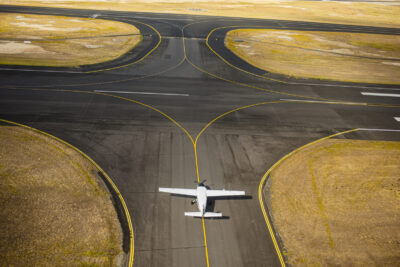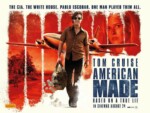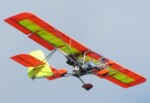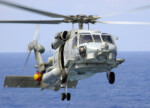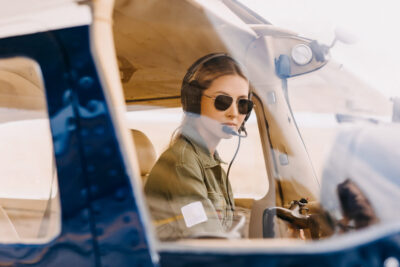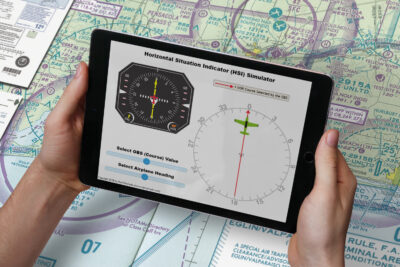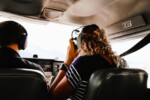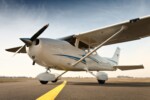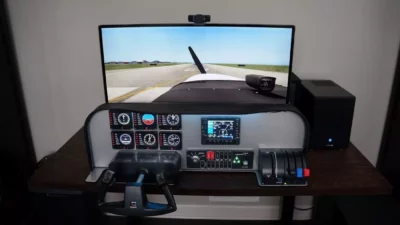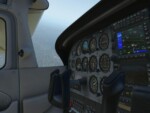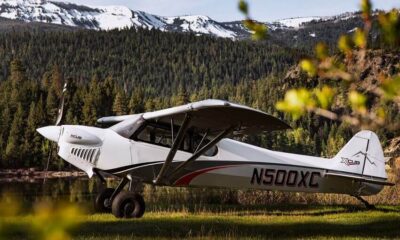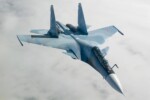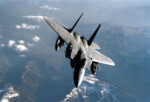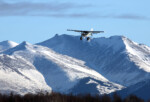The 11 Best Bush Planes of all Times
12 March 2022 | Updated on February 05, 2024
Bush planes are the 21st-century equivalent of the covered wagon, steam locomotive, and pony express all rolled into one. They are mainly responsible for the survival of the modern-day frontier lifestyle by delivering essential supplies, food, medicine, mail, and equipment to people inhabiting remote, hard-to-reach areas.
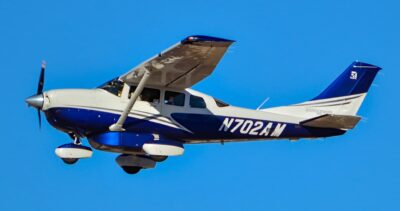

Bush airplanes also provide commercial transportation services, medical services, and evacuation and fight forest fires. They are used for tourism, including African safari tours and search and rescue operations. The best bush planes are built to land on almost any surface, including gravel, grass, dirt, and mud landing strips located in the middle of nowhere.
These aircraft can be extremely fun and forgiving to fly. A bush plane can be equipped with floats to land on rivers, lakes, or beaches. Bush planes fitted with skis are a common sight in isolated Alaska and Arctic communities during winter. Pilots can become certified to fly bush planes within a few days, and in return, you get to fly over endless miles of breathtaking terrain.
In the article below, we’ll look at the 11 best bush planes of all time, and why they are great aircraft!
The 11 Best Bush Planes of all Times
Now without further ado, let’s dive in and look at the 11 best bush planes of all times!
11. Grumman G-21 Goose
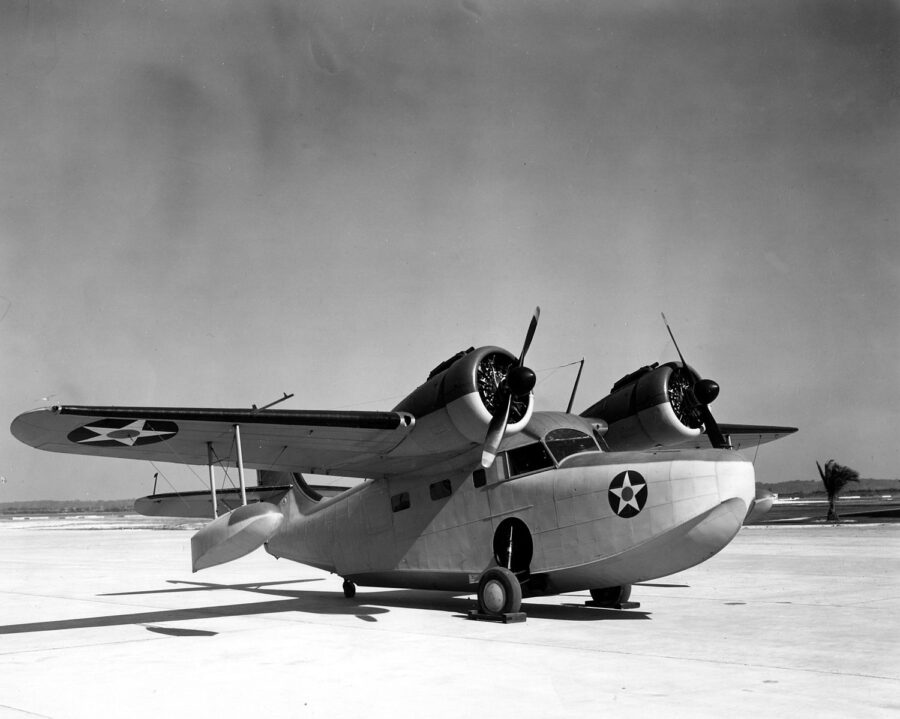

The G-21 Goose is a pioneering amphibious bush plane initially designed as a luxury commuter aircraft for the wealthy. However, the plane was successfully modified for military use during World War 2, and eventually, as a bush plane.
Over the years, the G-21 has undergone several modifications to its engines, avionics, windows, and landing gear to adapt the airplane for its new role as a bush plane. The G-21 Goose’s large interior size, which allows for a high passenger seating configuration (for a bush plane), and its amphibious characteristics make it an excellent choice for scheduled passenger flights into the remote communities and calm waters of Alaska Inside Passage located between the Gulf of Alaska and Puget Sound.
The G-21 can fly loads of tourists and their gear out into remote lakeside resorts or land on an improvised runway next to a mountain hunting lodge.
Aircraft details:
- Country of Manufacture: United States of America
- Manufacturer: Grumman
- Year of Introduction: 1937
- Role: Transport Amphibious Aircraft
- Number of Passengers: 5 – 7
- Max Airspeed: 201 mph (323 km/h, 175 kn)
- Range: 640 mi (1,030 km, 560 nmi)
- Number Built: 345
10. Cessna 206H Stationair
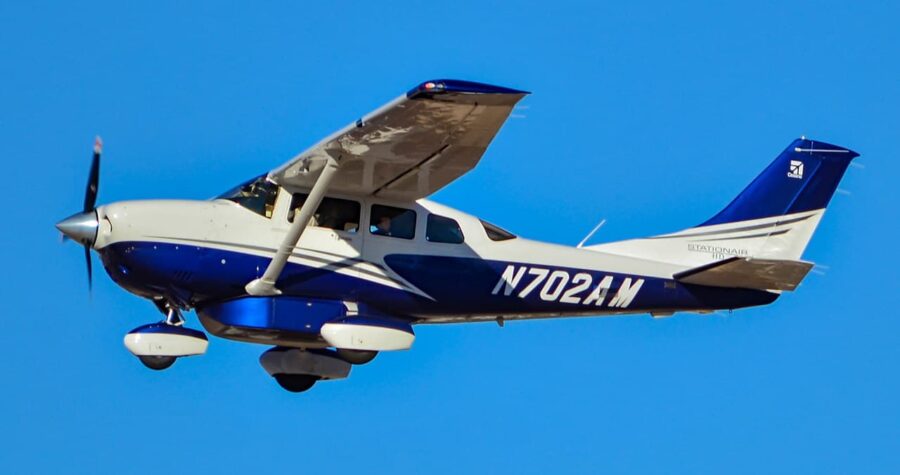

The Cessna 206H Stationair can be regarded as the workhorse of general aviation, and it can be found flying over large American towns or remote communities in the jungles of Indonesia. It is the perfect plane for short bush hops in the remote African wilderness. It can fly five passengers and their luggage to remote bush lodges making the aircraft one of the most popular bush planes among companies operating bush charter flights for Safari tourists in Kenya, Namibia, and Botswana.
The 206H Stationair powerful 310 hp Lycoming engine can handle any load hauling task you throw at it. It is commonly referred to as the “sports utility of the air” due to the rugged and beefy undercarriage capable of absorbing impacts from rocky and uneven runways. And it can be rigged with floats or skis for water landings and snowy/icy terrain.
Aircraft details:
- Country of Manufacture: United States of America
- Manufacturer: Cessna
- Year of Introduction: 1962
- Role: Light Aircraft
- Number of Passengers: Five
- Max Airspeed: 174 mph (280 km/h, 151 kn)
- Range: 840 mi (1,350 km, 730 nmi)
- Number Built: 8,509
9. de Havilland DHC-2 Beaver
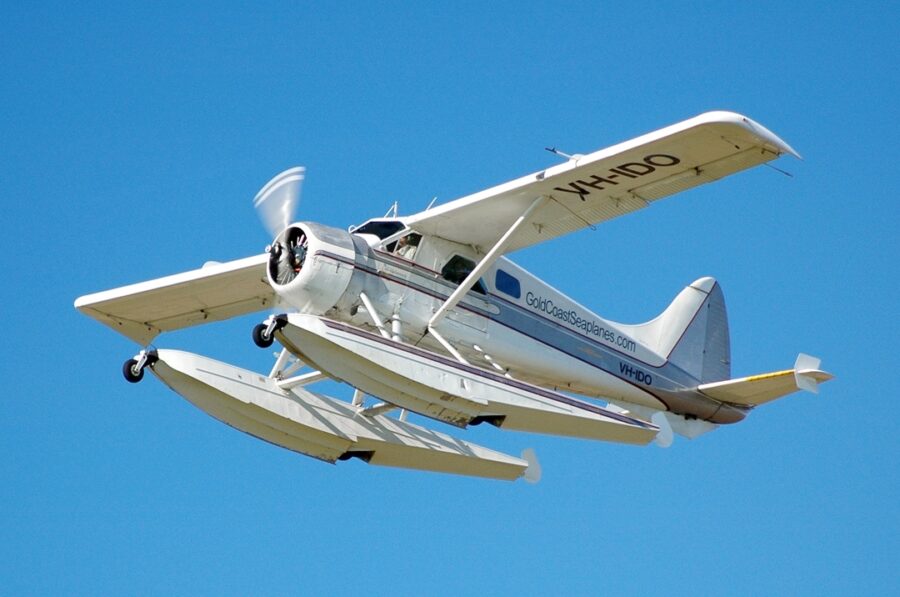

The de Havilland Beaver is an iconic Canadian bush plane that has been in service since 1947, and it is widely regarded as a 20th-century Canadian aviation engineering marvel. The DHC-2 Beaver is a perennial favorite of Canada’s bush pilots due to its enormous load-hauling capacity, gutsy performance, and impressive STOL capabilities.
The DHC-2 Beaver is the muscle plane of the skies. Its doors were designed to accommodate an oil drum. Over the years, scores of DHC-2 Beaver bush planes have delivered a diverse range of loads ranging from oil drums, construction equipment, medical supplies, All Terrain Vehicles, and camping gear to remote communities across Alaska, Northern Canada, and the Arctic.
The DHC-2T Turbo Beaver is a more powerful variant equipped with a 680hp Pratt & Whitney PT6A-27 turboprop engine for better performance and payload hauling (2,450Ib) capacity. DHC-2 Beaver’s undercarriage can be fitted with wheels, skis, or floats to suit changing weather conditions.
Aircraft details:
- Country of Manufacture: Canada
- Manufacturer: de Havilland Canada
- Year of Introduction: 1948
- Role: STOL Utility Transport
- Number of Passengers: 6
- Max Airspeed: 158 mph (255 km/h, 137 kn)
- Range: 455 mi (732 km, 395 nmi)
- Number Built: 1,657
8. Cessna 208 Caravan
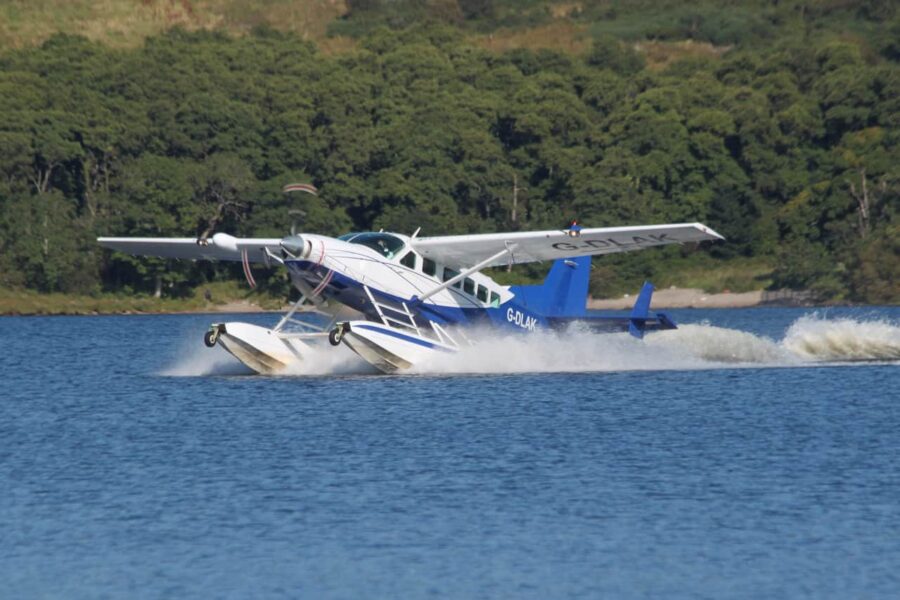

The Cessna 208 Caravan is one of the largest bush planes in production, and it is highly coveted among bush charter operators. It is easy to fall in love with this plane due to its vast payload capacity (8,785 Ib, 3,984.809 kg). Cessna 208 Caravans operating scheduled passenger flights can carry around eleven passengers with enough luggage space in its underbelly cargo pod and the left-side cargo hatch.
A primary advantage of the 208 Caravan bush plane interior is that it can be configured as a cargo compartment. Cessna also makes purpose-built freighter variants known as the 208B Cargomaster operated by FedEx.
Aircraft details:
- Country of Manufacture: United States
- Manufacturer: Cessna
- Year of Introduction: 1984
- Role: Utility Aircraft
- Number of Passengers: 9 – 13
- Cruise Speed: 214 mph (344 kph, 186 kn)
- Range: 1,232 mi (1,982 km, 1,070 nmi)
- Number Built: 2,600
7. de Havilland Canada DHC-6 Twin Otter
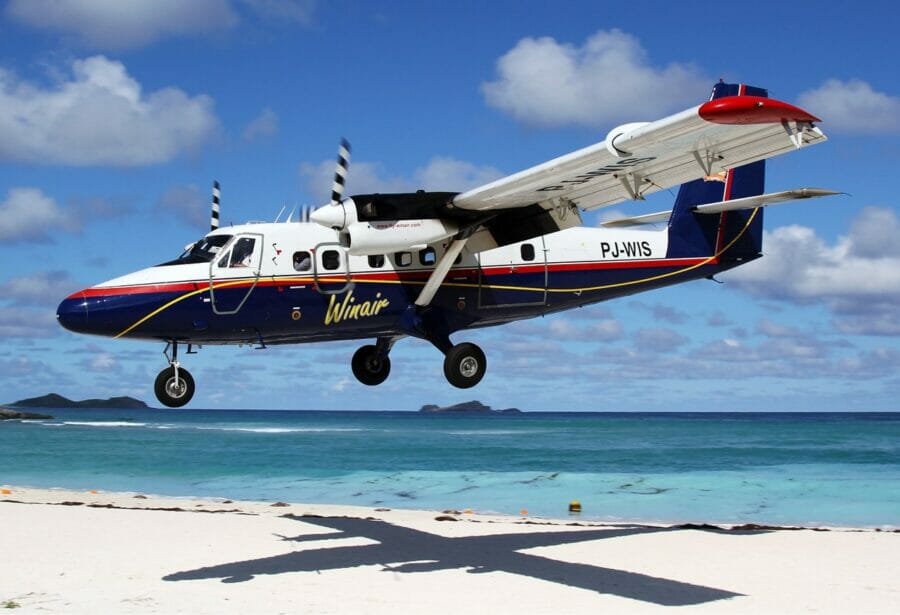

The DHC-6 Twin Otter bears de Havilland Canada’s hallmark of rugged reliability and longevity. The company ended production of the DHC-6 Otter in 1988. The bush plane’s impressive STOL performance alongside its exceptional amphibious capabilities, high climb rate, and the phenomenal pulling power of its twin turboprop engines warranted a comeback.
DHC-6 Twin Otters are very popular bush planes around the world. They can fly into remote parts of Northern Canada, Alaska, Papua New Guinea, Norway, the Antillies, and the Antarctic. Currently, the aircraft is manufactured by Viking Air which purchased Twin Otter’s type certificate and marketed the plane as the Viking Air DHC-6 Twin Otter. Currently, the aircraft is manufactured by Viking Air which bought Twin Otter’s type certificate and sells the plane as the Viking Air DHC-6 Twin Otter.
Aircraft details:
- Country of Manufacture: Canada
- Manufacturer: de Havilland Canada, Viking Air
- Year of Introduction: 1965
- Role: Utility Aircraft
- Number of Passengers: 19 -20
- Max Cruise speed: 184.5 – 210 mph (297-228 kph, 160-182 kn)
- Range: 886.8-919.6 mi (1,427-1,480 km, 771-799 nmi)
- Number Built: 1,000+
6. Pilatus PC-6 Porter
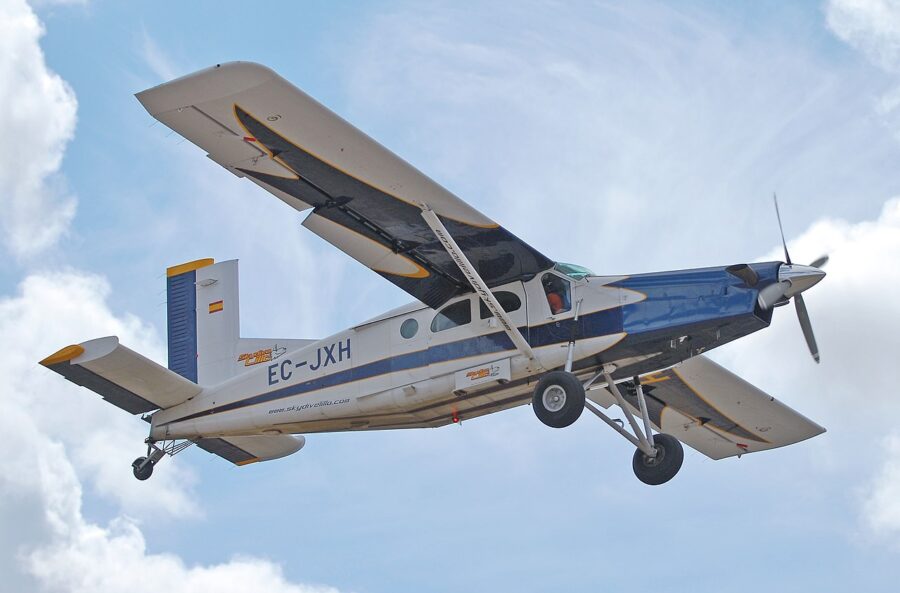

Although the production run of the Pilatus PC-6 Porter ended in 2019, the aircraft ranks among the most durable bush planes ever produced. For starters, it has impressive STOL capabilities comparable only to rotorcraft. It can land within 427 feet (130 m) of an airstrip, and it can take off within a distance of 640 feet (195 m), and there is more. In April 1960, a PC-6 prototype HB-FAN “yeti” with serial number 337 made a landing on the Dhaulagiri glacier in Nepal at an altitude of 18,865 feet (5,750 m). According to the Guinness Book of World Records, it was the highest landing of a fixed-wing aircraft.
PC-6 Porter pilots have described the aircraft’s flight attributes as surreal, and its handling characteristics are similar to that of a helicopter. During the Vietnam War, scores of PC-6 Porters operated hundreds of clandestine missions delivering troops and supplies to remote, high-altitude bases located on unprepared airstrips in the hot jungles of Southeast Asia.
Aircraft details:
- Country of Manufacture: Switzerland
- Manufacturer: Pilatus Aircraft, Fairchild Aircraft
- Year of Introduction: 1961
- Role: STOL Passenger and Utility Aircraft
- Number of Passengers: 10
- Max Airspeed: 144 mph (232 kph,125 kn)
- Range: 450 mi (730 km, 390 nmi)
- Number Built: 595
5. Helio Courier
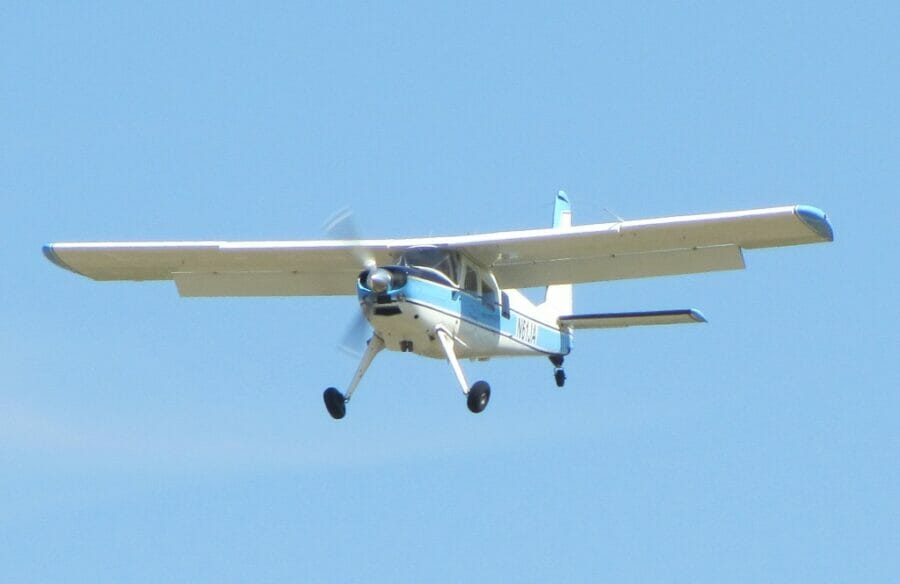

The Helios Courier may be a relatively obscure aircraft compared to the more popular Cessna 208 or the de Havilland Canada bush planes. It is a serious contender for the best bush plane of all time.
The Helio Courier is a military and civil patrol aircraft, a commercial passenger transport, a cargo delivery floatplane, and an essential lifeline for missionaries serving in isolated jungle outposts. The bush plane features an indestructible taildragger design which can be rigged with skis. Variants of the Helio Courier are a common sight over Alaskan skies, where the bush plane is considered by many as a guardian angel.
Aircraft details:
- Country of Manufacture: United States
- Manufacturer: Helio Aircraft Company
- Year of Introduction: 1954
- Role: STOL Utility Aircraft
- Number of Passengers: 5
- Max Airspeed: 170 mph (274 kph, 148 kn)
- Range: 1,090 mi (1,760 km, 950 nmi)
- Number Built: 500
4. CubCrafters XCub
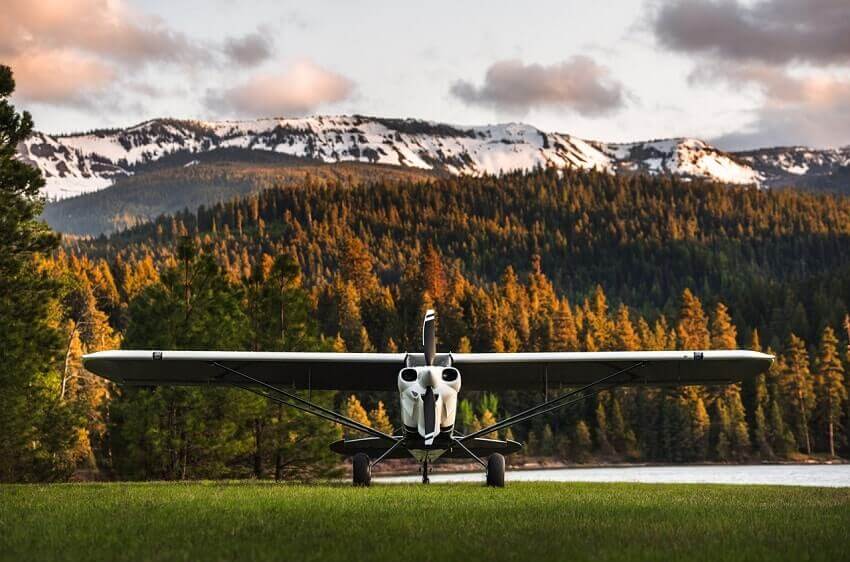

Ever since Piper introduced the Cub, the iconic yellow taildragger has stolen the hearts of many pilots. Many pilots have learned to fly on a Cub, but even more are eager to get their taildragger certificate to really start working on their stick and rudder coordination that’s so critical when flying a taildragger aircraft.
The Washington-based manufacturer CubCrafters built the XCub as a successor to the highly successful Carbon Cub. The company was founded in 1980 by Jim Richmond, who one day came back from a trip to Alaska, sold his home insulation business and decided to start rebuilding Cubs. CubCrafters was born.
After starting out as a business only rebuilding and modifying existing Cubs, the company later moved to building and certifying its own aircraft. With the FAA introducing the new Light Sport Aircraft class, CubCrafters introduced its 100 hp Sport Cub and later the 180 hp Carbon Cub SS. For people who prefer to buy the aircraft as a kit to assemble themselves, CubCrafters offers the Carbon Cub EX, a kit version of the Carbon Cub SS.
Aircraft details:
- Country of Manufacture: United States
- Manufacturer: CubCrafters
- Role: STOL Utility Aircraft
- Number of seats: 2
- Introduced: June 2016
- Max Airspeed: 153 mph (246 km/h, 133 kn)
- Range: 800 mi (1,300 km, 700 nmi)


Learn more
Boys and Their Toys: The CubCrafters XCub
3. Cessna 185 Skywagon
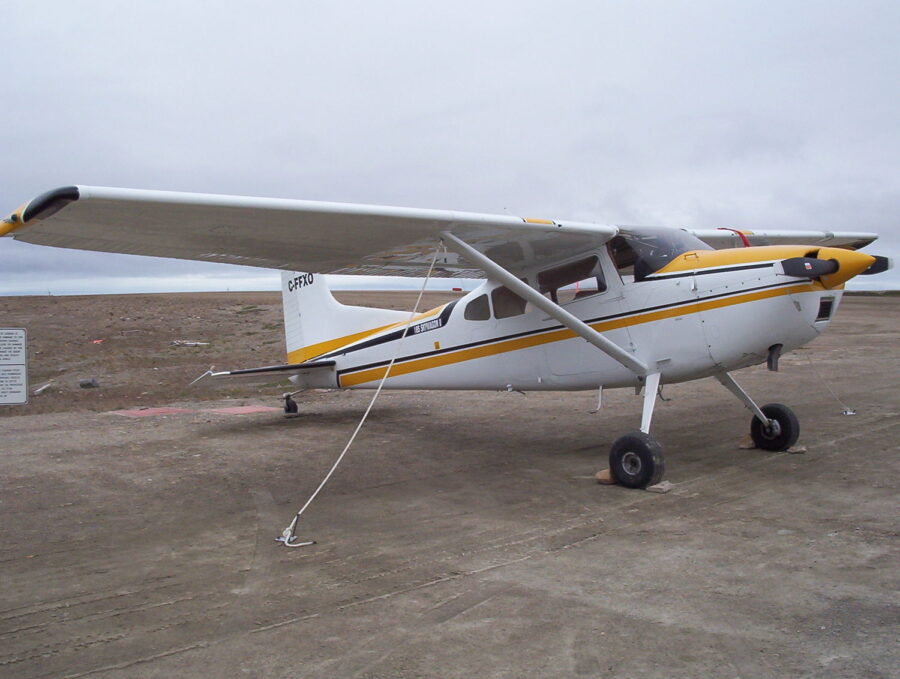

The Cessna 185 Skywagon bush plane is everything you expect from a Cessna, an aircraft manufacturer renowned for making excellent bush planes. It fits into the small to medium-sized bush planes category, and it is suitable for flying large cargo to small remote airstrips. The 185 Skywagon can fly in and out of tight spots that larger bush planes can’t.
The aircraft features a taildragger undercarriage design that is an essential element for successful bush planes. The undercarriage can be fitted with skis or floats to increase the Skywagons versatility.
Aircraft details:
- Country of Manufacture: United States
- Manufacturer: Cessna
- Year of Introduction: 1961
- Role: Light Utility Aircraft
- Number of Passengers: 5
- Max Airspeed: 178 mph (287 kph,155 kn)
- Range: 830 mi (1,330 km, 720 nmi)
- Number Built: 4,400
2. de Havilland Canada DHC-3 Otter
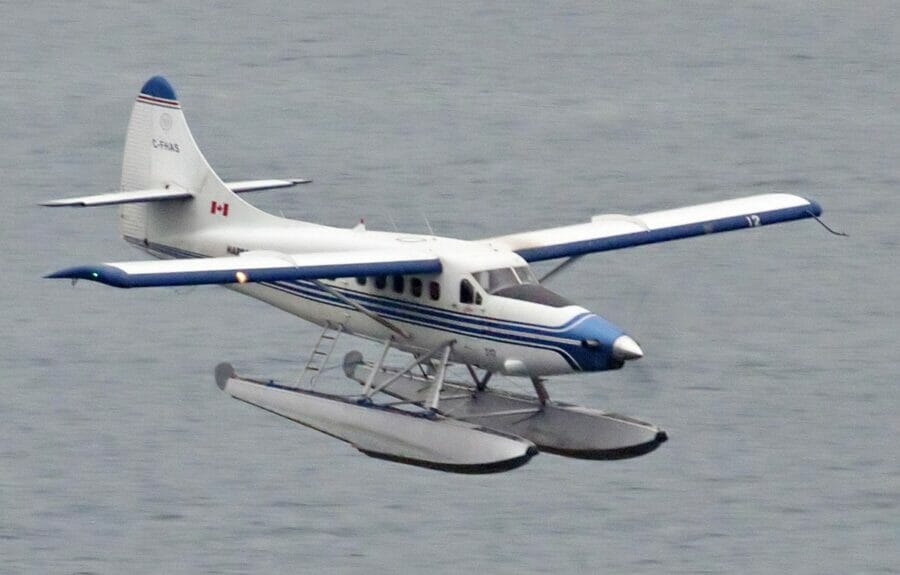

Initially called “King Beaver” by de Havilland, the DHC-3 Otter is a larger and more powerful replacement to the successful DHC-2 Beaver. It is the design basis for the more popular DHC-6 Twin Otter. It is available in a single or twin-engine configuration, depending on the operator.
The Otter is used for commercial passenger operations in Alaska and Canada. It has impressive STOL capabilities as the DHC-2 Beaver, making it a popular bush plane with military and civil defense operators. The Otter can be fitted with floats and skis for water landings and operating on snowy/icy terrain. Several bush pilots have described the Otter’s incredible range as a reason for preferring the aircraft over other bush planes.
Aircraft details:
- Country of Manufacture: Canada
- Manufacturer: de Havilland Canada
- Year of Introduction: 1953
- Role: STOL Utility Transport
- Number of Passengers: 9 – 11
- Max Airspeed: 160 mph (260 km/h, 140 kn)
- Range: 960 mi (1,540 km, 830 nmi)
- Number Built: 466
1. Piper PA-18 Super Cub
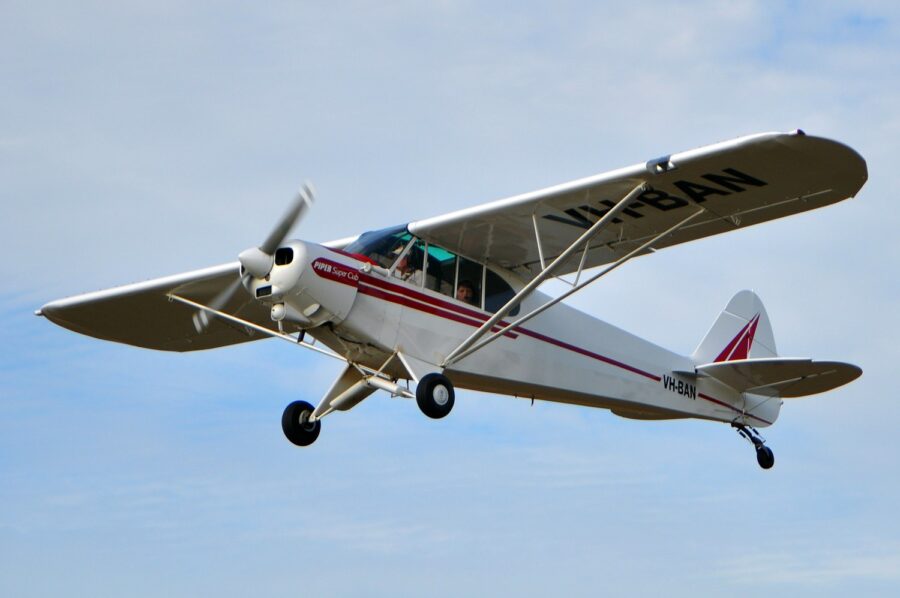

The Piper PA_18 Super Cub is the dirt bike of bush planes, and if you have enough money to build a luxury fishing lodge beside a scenic mountain top lake, this is the best bush plane to get you there. The Super Cub may be one of the smallest bush planes, but it has a knack of landing in places where larger and more powerful planes dare not.
This bush plane is a STOL champ needing only 350 feet (106.8 m) distance to land or take off from virtually any surface, opening up the possibility of a quick trip into the most remote and unspoiled outlands. The Piper rugged undercarriage can be fitted with large tundra tires or a pair of floats to notch a landing on lakes, tundra benches, and gravel bars. You can add a couple of skis if you need to land on a glacier.
Aircraft details:
- Country of Manufacture: United States
- Manufacturer: Piper Aircraft
- Year of Introduction: 1949
- Role: Light Utility Aircraft
- Number of Passengers: 1
- Max Airspeed: 130 mph (209 km/h, 113 kn)
- Range: 460 mi (740 km, 400 nmi)
- Number Built: 10,326
What are Bush Planes?
Bush airplanes are small rugged airplanes purpose-built for flying into remote and undeveloped locations around the globe where there are no regular commercial flight services or airports and runways. Larger bush planes can seat around nineteen passengers for scheduled commercial passenger flight services.
The earliest use of bush planes was in 1919 when Canadian pilots began using war-surplus Curtiss HS-2L naval aircraft to map forests and fight wildfires. Since then, they have become an indispensable general aviation aircraft providing an all-season lifeline to communities in the Australian Outback, the African savanna, Northern Canada, Alaskan Tundra, Amazon rainforest, and New Zealand mountains.
